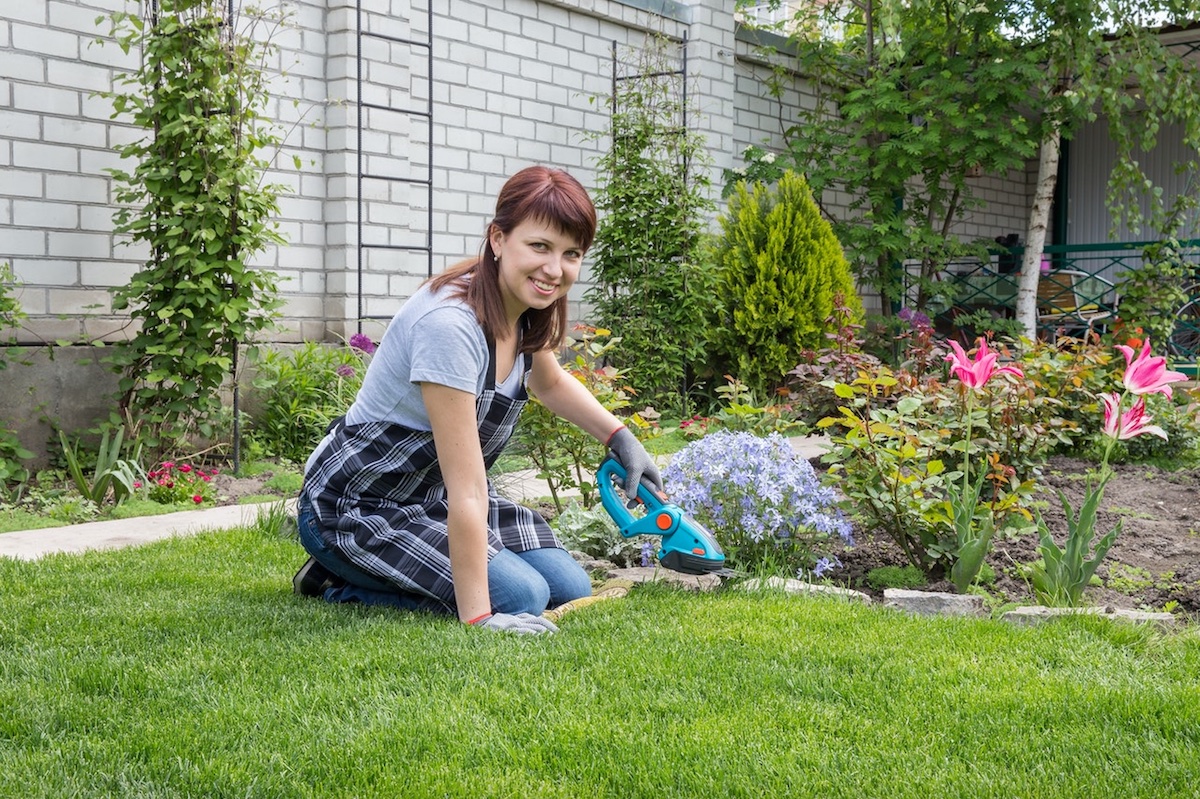

Whether you’re a first-time gardener or a seasoned professional, there is much to do to prepare for gardening season. Buying seeds and supplies can take time. Understanding what will work best for your location may take a lot of research. Gardening can also be a big responsibility, especially when done in an environmentally-friendly way. While there are many aspects to consider when beginning your gardening journey each season, it offers so many perks.
If you’re still on the fence about gardening, consider all of the benefits that it provides. A new hobby that gets you outside more can actually make you happier. Succeeding at a new task and providing food for yourself can build self-esteem. If you harvest a crop, it may even help you eat healthier. And your produce likely isn’t laced with pesticides, which is a win-win.
While the weather is still cold, start preparing for the growing season ahead. Decide what type of garden you will grow. Understand the benefits of gardening and what motivates you to get started. Consider what you will do to set your future self up for success. Depending on which region you’re in, it may even be time to start planting! Here are five tips to get you started early.
1. Do Your Research
With winter weather in the forecast, it’s a great time to start your garden research. Learn about what produce grows successfully in your area. Understand what climate your seeds need to flourish. Consider what you’ll need to maintain the garden of your dreams. Ask yourself, what is your goal for the garden?
Maybe you hope not to buy a single piece of produce from the store this season. Or, maybe you just want to grow tomatoes and lettuce. Regardless, you will need to understand what seeds and materials you need. You’ll also want to consider the type of gardening you will be doing. Square foot, container, and raised bed gardening are different techniques you may use depending on your area.
Researching before starting your process can also allow you to prepare a harvesting schedule better. Gardening takes a lot of time and patience. By creating a Calendar, you can keep track of your gardening responsibilities. Make sure to select a start date to prepare your growing space. Set reminders to plant new seeds and water-growing ones. Add time blocks to pull weeds and check the weather. Your research will help your planning process be fruitful.
2. Purchase Supplies
With ample time to prepare for gardening season, it’s tempting to put off purchasing the supplies you’ll need. Ordering these items ahead of time can allow ample shipping time. When it’s time to start planting, you’ll be ready to go. Because materials for gardening can quickly add up, it’s financially smarter to buy over the course of a few months. Preparing for big purchases can bring relief to your wallet.
In fact, you’ll want to consider all the items you need to purchase depending on the type of gardening you choose. While aquaponics is a cool gardening method, it involves pricey materials. If you choose biodynamic gardening, it’s a lot cheaper. However, you may need to purchase or create a composting bin. With nearly 20 different types of gardens, the types of supplies you need will vary greatly.
3. Start Inside
If you’re in an area where the climate stays cold later in the year, you may want to consider starting your garden inside. This can look very different depending on many factors. Resources like space, financial allotment, and time can dictate whether or not an indoor garden is a smart move for you. When creating an indoor garden, there are various decisions to be made. First, decide between hydroponic or soil-based gardening.
In hydroponic gardening, plants grow directly in water. You may be wondering how this works. While more challenging than soil-based gardening, hydroponic growing provides oxygen to the roots via water. Because there is no soil, a liquid fertilizer should be added to the water to replace missing soil-based nutrients. You can even buy hydroponic systems online that include growing containers and artificial lights.
If this method seems too complicated or you’re not ready to splurge on an artificial light, try starting with herbs. As long as you have bright light for six to eight hours a day, herbs can be a simple item to grow. Try starting with low-maintenance herbs like basil, parsley, and chives. Be sure to select containers that have drainage. This will keep the soil moist but not waterlogged.
4. Be Environmentally Friendly
Although gardening is an easy way to clean the air and soil, it can sometimes be damaging to the environment. There are multiple factors in which the process can be harmful. For example, if you are using too many chemicals in your garden, you can disturb your yard’s ecosystem. Pesticide use can be a direct cause of the destruction of good insects and fungi. Instead of using intense synthetic or natural chemicals, try non-chemical methods like neem oil.
Another option for fertilizing your soil is through composting. Coffee grounds and vegetable scraps can be turned into organic matter. When your compost is dark and crumbly, it is ready to be spread over the soil. Soil organisms thrive in this environment. The compost can help balance the density of soil and promote healthier plant roots.
Rainwater is another natural addition to your growing efforts that promote smart gardening. Instead of always using water from a hose, conserve water by using rainwater. It is soft water free from various chemicals, minerals, and salts that are found in city water. Rainwater can rid your soil of residue built up on your plants from other water sources. In addition, rain contains nitrates that plants need to survive.
5. Prepare Your Space
Maybe the most practical task you can do to prepare for gardening is to work on your space. Once you’ve chosen the type of garden you will use, you will need to create it. Use a random warm day in the winter to get a head start on your backyard. Not to mention, getting outside in the winter can do wonders for your mental health. If you’re using a garden bed, begin by clearing out any debris in your yard. Pick up sticks, pull weeds, and rake the soil level.
Then, start to build your garden boxes. Measure the space you will use for growing. Purchase rot-resistant cedar from your local hardware store. Then, start to build your beds. There are great tutorials online that show you step-by-step processes for building garden boxes that last.
As the weather gets warmer, you’ll be ready to prepare the soil. Loosen the soil to 12 inches so that the plants can root deep. Use your compost to richen the soil’s nutrients before you even begin planting your seeds. If you’re advanced, you’ll want to check the pH of your soil. This will determine what nutrients your soil actually needs.
Though the gardening process can be complicated and daunting, preparing early can make it easier. Try setting up your space in the winter. Research the fruits and vegetables that are most successful in your climate and location. Understand how gardening can impact the environment both positively and negatively. Purchase seeds and create a gardening calendar to keep you on track. And no matter what, remember to have fun!
Featured Image Credit: Photo by Andrea Picquadio; Pexels; Thank you!











Abby Miller
Student at UC Berkeley, currently working on a degree in Electrical Engineering/Computer Sciences and Business Administration. Experienced in CSX, productivity management, and chatbot implementation.